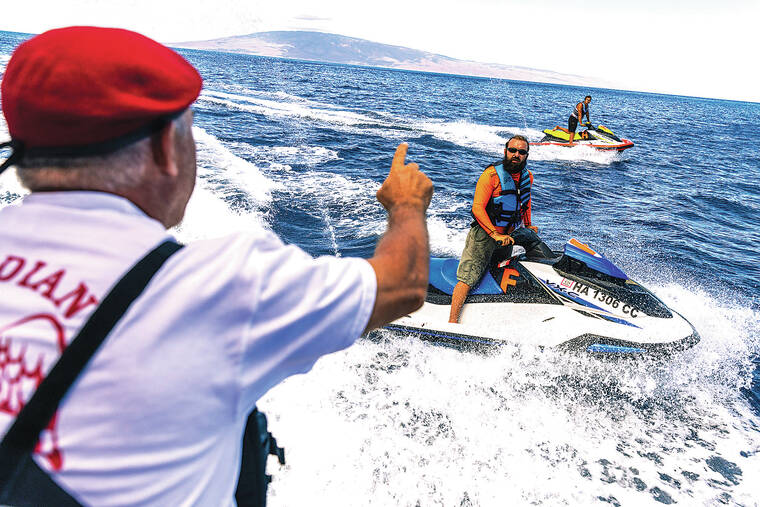After learning that 100 pounds of insulin was stuck, grounded last week at Kona International Airport on the big island, volunteers at Maui Brewing Company, Hawaii’s largest craft brewery, got to work. They spent several hours trying to link health officials with a general aviation pilot who could complete the medical delivery to their community.
Kami Irwin, who runs a military nonprofit, was frustrated that it fell to volunteers like her to secure such a vital resource.
“The fact that I’m just a normal civilian that is trying to help the community along with everyone else here and we were able to make that happen?” Irwin said. “It doesn’t look good.”
Irwin has been coordinating donation pickup out of the brewery’s tasting room, taking advantage of what the tight community calls “coconut wireless,” informal communication chains that spread information like a game of “telephone.”
“We will be OK if us residents keep building together,” she added.
Volunteers on Maui have cobbled together countless improvised, urgent solutions like the insulin shipment in response to the country’s deadliest wildfire in over a century, which has killed more than 100 people and displaced thousands. Nonprofit groups struggle to deliver aid to the second-farthest state from the U.S. mainland, while mutual aid groups and local businesses help fill the cracks.
The Federal Emergency Management Agency opened its first disaster recovery center on Maui on Wednesday, the same day traffic resumed on a major road. In the initial days following the fire, officials scrambled to house thousands of displaced residents. Transportation and communications remained limited for days in impacted areas, which likely contributed to uncertainty for some residents about where to get assistance. Meanwhile, relief groups based on the U.S. mainland have contended with a major airport hamstrung by a deluge of departing tourists and arrivals toting assistance from afar.
But nonprofits and volunteers are ready to help.
The Salvation Army has been supplying meals and offering counseling to survivors and people impacted, serving food to 12,000 people on Tuesday, said Maj. Troy Timmer, divisional commander of The Salvation Army Hawaiian &Pacific Islands. The Salvation Army’s Lahaina Corps location, was destroyed in the fire, but their staff all safely evacuated and continue to track the losses among the people they served. Trimmer acknowledged possible frustration as the community and officials scramble to meet urgent needs, saying that major tragedies take a significant toll.
“From my experience, what we’ve seen is that people are doing their best, including the officials. They’re doing the best. Could there be something missed in the process? Absolutely,” he said.
International relief groups like CityServe said that the primary airport in wildfire-ravaged Maui has been so full the group decided to truck a quarter-of-a-million meals from Florida to California and then load them onto ships to cross over 2,500 nautical miles. Officials from the faith-based nonprofit hope the packages of apple cinnamon oatmeal and vegetable rice arrive next Monday at the earliest.
“It’s almost impossible to fly them in now,” said Todd Lamphere, the vice president of government relations for CityServe.
His prior experience with emergency response tells him the meals will arrive just as that first wave of external support begins to wane.
Edward Graham, chief operating officer of Samaritan’s Purse, said the nondenominational evangelical Christian organization landed its cargo plane Tuesday with 17 tons of equipment. Most of their work will involve helping homeowners identify family heirlooms and other valuables.
Even finding a timeframe at the airport to drop off tools like sifting instruments, vital to helping people get closure by finding lost personal treasures, required coordination, Graham said. Even though there are several airfields on the island, Kahului Airport “has been overloaded just because of all the disaster relief flights coming in,” he said.

